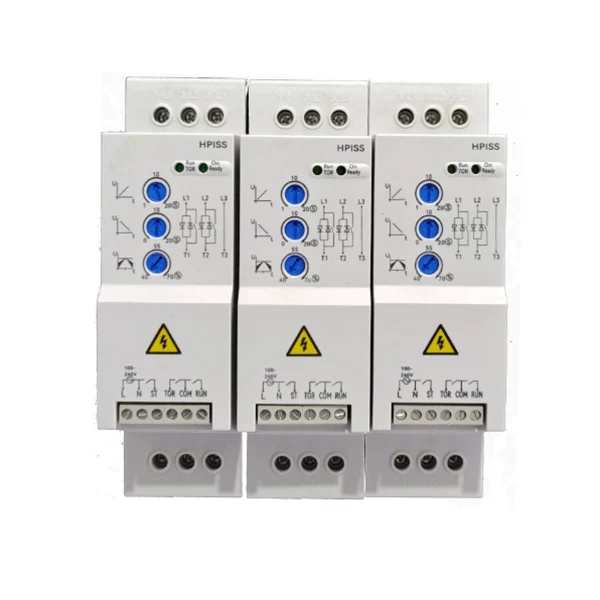Understanding the Importance of Control Electrical Systems in Modern Industry
2024-09-03
In the age of automation and advanced technology, control electrical systems play a pivotal role in ensuring the smooth operation of industrial processes, commercial buildings, and even residential applications. These systems, which manage, regulate, and monitor electrical circuits and devices, are the backbone of modern infrastructure, enabling efficiency, safety, and precision in various sectors. This blog will explore the significance of control electrical systems, their components, and how they contribute to the functioning of complex operations.
What Are Control Electrical Systems?
Control electrical systems refer to the collection of devices and circuits that manage and regulate electrical power and signals in various applications. These systems are designed to control the operation of machines, equipment, and entire processes, ensuring they perform as intended. Control systems can range from simple on/off switches to complex automated systems that manage multiple variables simultaneously.
Key Components of Control Electrical Systems
1. Controllers
Controllers are the heart of any control electrical system. They are devices that manage the operation of other components by receiving inputs, processing data, and sending commands to execute specific actions. Programmable Logic Controllers (PLCs) are widely used in industrial settings to automate machinery, control processes, and ensure safety.
2. Sensors
Sensors are critical in providing real-time data to the control system. They detect changes in physical conditions such as temperature, pressure, humidity, or motion and convert them into electrical signals. These signals are then processed by the controllers to adjust operations accordingly. For example, a temperature sensor in an HVAC system will monitor the room's temperature and adjust the heating or cooling system to maintain the desired climate.
3. Actuators
Actuators are devices that convert electrical signals from the controller into physical actions, such as opening a valve, moving a motor, or adjusting a position. They are essential for carrying out the instructions given by the control system, making them integral to the operation of machinery and equipment.
4. Relays and Switches
Relays and switches are used to control the flow of electrical power in a circuit. They act as intermediaries between the controller and the devices being controlled, allowing the system to turn on or off specific components as needed. Relays are often used in more complex systems where higher currents need to be managed, while switches are typically used in simpler on/off scenarios.
5. Human-Machine Interfaces (HMIs)
HMIs are the interfaces that allow operators to interact with control systems. These can range from simple push-button panels to sophisticated touchscreens that display real-time data, system status, and allow for manual input. HMIs play a crucial role in monitoring and controlling processes, providing an intuitive way for users to manage operations.
Applications of Control Electrical Systems
1. Industrial Automation
In industrial settings, control electrical systems are used to automate manufacturing processes, manage machinery, and ensure safety. These systems can control everything from assembly lines to robotic arms, increasing productivity, reducing human error, and enhancing overall efficiency.
2. Building Management
Control systems are integral to managing electrical, heating, ventilation, and air conditioning (HVAC) systems in commercial buildings. They ensure that lighting, climate control, and security systems operate efficiently, reducing energy consumption and maintaining a comfortable environment.
3. Energy Management
In power generation and distribution, control electrical systems are used to regulate the flow of electricity, manage load distribution, and ensure the stability of the grid. These systems are essential for preventing outages, optimizing energy use, and integrating renewable energy sources into the grid.
4. Transportation
In transportation, control systems are used to manage everything from traffic lights and railway signals to the operation of vehicles and aircraft. These systems ensure safety, coordinate traffic flow, and optimize the performance of transportation networks.
The Importance of Control Electrical Systems
1. Enhanced Efficiency
Control systems optimize the operation of machines and processes, reducing waste and increasing productivity. By automating tasks that would otherwise require manual intervention, these systems save time and resources, contributing to the overall efficiency of operations.
2. Improved Safety
Safety is a critical concern in any industrial or commercial setting. Control electrical systems enhance safety by monitoring processes in real-time, detecting anomalies, and triggering alarms or shutdowns when necessary. This helps prevent accidents, equipment damage, and ensures compliance with safety regulations.
3. Scalability and Flexibility
Modern control systems are highly scalable, allowing businesses to expand operations without overhauling existing infrastructure. They are also flexible, easily adapting to changes in processes or the integration of new technologies.
4. Data Collection and Analysis
Control electrical systems collect vast amounts of data that can be analyzed to improve processes, predict maintenance needs, and optimize performance. This data-driven approach enables continuous improvement and informed decision-making.
Conclusion
Control electrical systems are the cornerstone of modern industry, enabling the automation, regulation, and monitoring of complex processes across various sectors. From enhancing efficiency to ensuring safety, these systems provide the foundation for reliable and optimized operations. As technology continues to advance, the role of control electrical systems will only become more critical, driving innovation and supporting the growth of industries worldwide. Whether in manufacturing, energy, transportation, or building management, the importance of these systems cannot be overstated.



